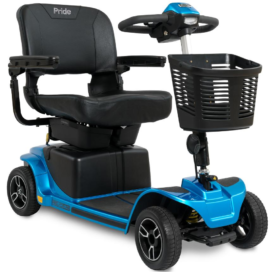Do scooter sharing systems have any harm? What are they?
Option to proceed with deterrent and visual contamination
Visual contamination is a central issue made by scooter-partaking in urban communities due to clients illicitly stopping e-scooters on walkways, entrances, streets, and passageways. E-scooters that are mistakenly stopped litter walkways and block passerby walkways. Riding e-scooters on the walkway is deterred because it upsets people on foot and represents a danger at high paces. The expression “scooter fury” or “scooter war” depicts a development by disappointed city occupants to unlawfully dump e-scooters into streams or cover them so clients can’t find and rent a scooter in honolulu .
![]()
Injury and casualty Safety
There is restricted data on the general size of wounds brought about by electric scooters. Be that as it may, in a three-month study, 20 individuals were harmed for every 100,000 rides. A nearby larger part were head wounds, and of those cases, 15% were horrible. Broken bones; tendon, ligament, or nerve hindrances, extreme dying; and organ harm are different wounds experienced by electric scooter riders. Non-riders have likewise been a casualty of electronic scooter wounds through impacts or stumbling on the gadgets on the roads.
Normal seasons of mishaps happen during work and times of heavy traffic. 33% of all wounds result on walkways and 55 percent happen on roads. A few mishaps included vehicles and deterrents on the ground, similar to checks, shafts, or sewer vent covers. Mechanical issues, like bombing brakes and wheels, and occupied riders were other contributing variables for mishaps.
The utilization of head protectors might have diminished the quantity of horrendous cerebrum injury cases, yet simply 4% answered to have worn one. Lime and Bird are overhauling the gadgets with sturdier brakes to assist with lessening the mechanical difficulties of riding the scooters.
Unsanitary circumstances
In light of the COVID-19 pandemic, scooter organizations need to roll out numerous improvements to their strategic policies for a while.
Reaction and guidelines
A few United States urban communities have presented guidelines on e-scooters and scooter-sharing organizations to address well-being concerns and the unlawful unloading of e-scooters. In May 2018, soon after the underlying send-off of e-scooters in San Francisco, the city gave an order to stop all activities to Bird, Spin, and Lime after getting around 1,900 grievances from occupants in regards to walkway blockage because of the unlawful stopping of e-scooters. As of June 2018, forthcoming scooter-sharing organizations are expected by the SFMTA to present a field-tested strategy in regards to somewhere safe and secure worries and walkway mess to get a grant to rent and possess e-scooters.
Protection concerns
Scooter-sharing organizations gather mysterious GPS and cell put together information concerning client rides; this information assists organizations and urban communities with anticipating the structure of new bicycle paths and authorizing program rules like stopping and permitted administration regions. Urban communities expect organizations to share information that contains the exact subtleties of when and where e-scooters are utilized.
In November 2019, the Los Angeles Department of Transportation (LADOT), in California, United States, briefly suspended Uber auxiliary Jump’s license to rent e-scooters and bicycles following Uber’s inability to send continuous information specifying the beginning point, endpoint, and travel time on all rides as an area of the city’s one-year pilot grant program.
Environmental change influence
A daily existence cycle evaluation of e-scooter sharing frameworks performed by specialists at North Carolina State University calls cases of maintainability advantages of the projects into question, finding that almost 66% of the time individuals utilize shared e-scooters, they are making more CO2 discharge than they would have on the off chance that scooter-share was impossible. The LCA considered materials and assembling, use, transportation and charging, and end-of-life for shared dockless e-scooters.

